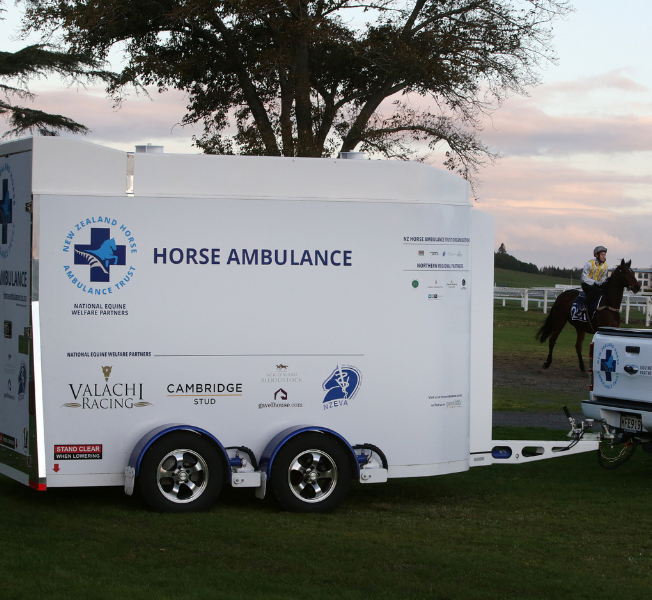New Zealand Thoroughbred Racing considers racehorse injuries and fatalities to be a serious concern in the continuing welfare of our horses.
Tendon, ligament, muscle injuries and stone bruises can occur in training and racing. Rapid diagnosis, rest and treatment are common practice in the industry. Research into causes and treatments, and investment in track and training surfaces will contribute to fewer injuries and more effective treatments of these injuries.
Instances when a horse must be euthanised can undermine credibility and public trust in racing, particularly when in proximity to the public. However, although fatal accidents occur occasionally, New Zealand generally performs well against its global counterparts, with fewer fatal injuries to thoroughbreds than most other countries.
Informing the public
There have been claims made in media that horses are destroyed on the grounds that it is uneconomic to provide the horse with care and recovery. In the event of a broken limb or other skeletal injury, the reality is that a prompt decision to euthanise is usually the most humane outcome for the horse.
Leading English equine vet, Jenny Hall, who was veterinary services manager at the 2012 Olympic Games, says:
“When you look at their lower limbs, which is where a high incidence of these injuries are, there’s very little soft tissue covering the bone. So unfortunately, often, if there’s a fracture, it may well be that the bone penetrates the skin, which turns it into an open fracture.
Even in people, that makes it a much harder situation to get good healing. So you can imagine, with a horse, no matter how quickly a jockey pulls it up, it’s hard for the skin not to get damaged and also for the blood supply to get damaged.
Even if there were a remote possibility that the bone might heal, it may not be a good idea to wait and see, because of the complication of laminitis, a crippling and painful hoof condition.
Even if the horse could be persuaded to lie still and let the bone recover, there are other problems. It’s weight, in particular, works against it. They get pressure sores if they’re lying down all the time, things that are difficult to manage in people, let alone in a 500kg horse.
Are pressure sores the reason we don’t just knock them out and leave them on their side until they recover? “No,” said Hall. “They’d get pneumonia for starters.”
Could a horse not have its leg supported in a sling? “Again, they’re heavy,” Hall said. ”So, to take a meaningful amount of the horse’s weight, you’re then compressing its intestinal tract and everything”.
”Temperamentally, as well, you can’t explain to a horse what you’re doing. You can’t say, look, mate, stay there quietly, it’ll all be fine, you’re only going to be there for three weeks, don’t worry about it.”
NZTR is making it a priority to identify risks and other factors to inform initiatives that aim to reduce the numbers of future fatal and non-fatal injuries by:
- Maintaining a Racing Incident Database. Since August 2014 NZTR and Harness Racing New Zealand (HRNZ) have, with the cooperation of race day veterinarians employed by the Racing Integrity Board, recorded the details and circumstances of any race day injuries, fatalities and pre- or post-race inspections of horses
- Reviewing (led by the NZTR Equine Mortality Review Panel) particular horse fatalities or any series of similar racing injuries, and reviewing academic literature that relates to New Zealand or international horse injury rates and cause
- Guiding and informing academic research into racing injuries. This work helps us understand thoroughbred injuries, particularly the risk factors that may be unique to New Zealand. The NZ Equine Research Foundation (NZERF) reviews and publicises appropriate research.






